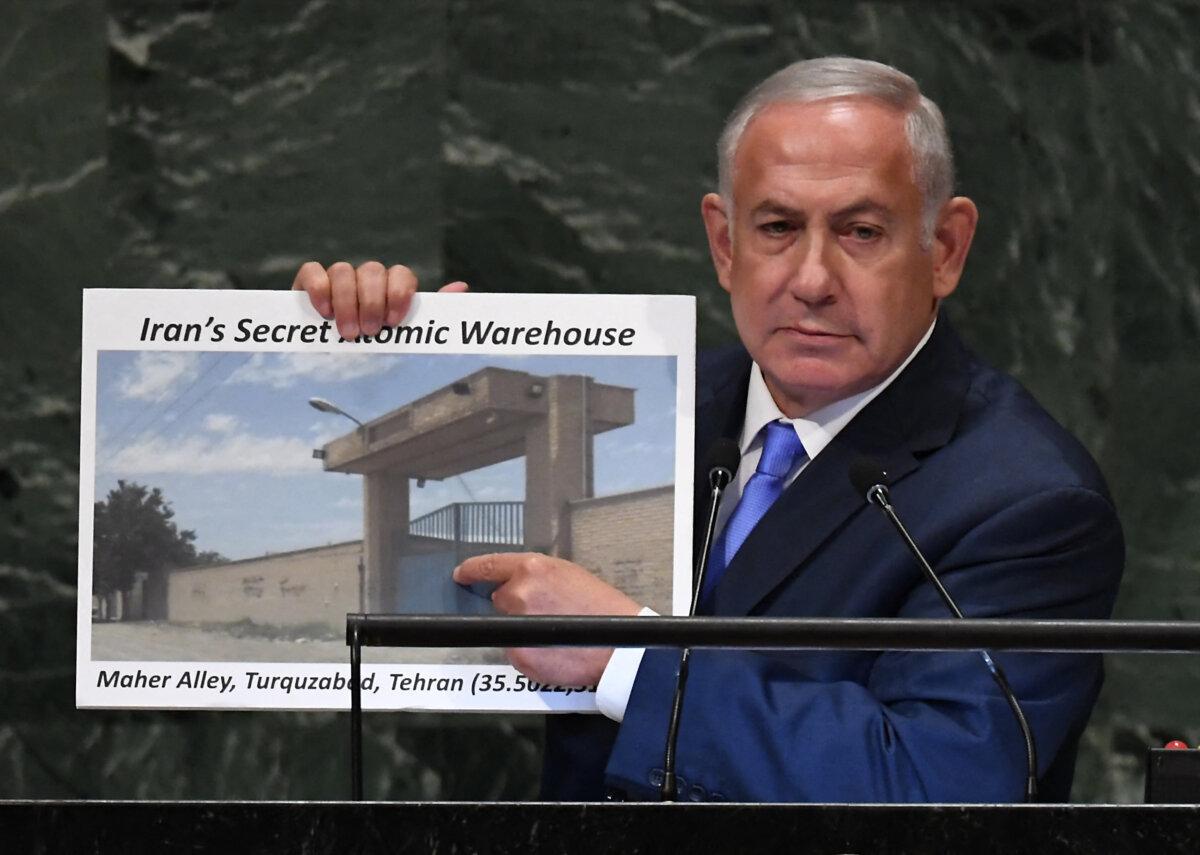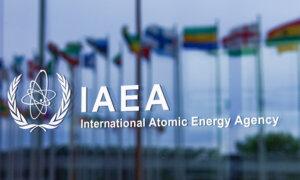An expert on nuclear disarmament says the International Atomic Energy Agency is a nuclear watchdog, but only the U.N. Security Council has the power to ‘bite.’
News Analysis
After an international nuclear watchdog condemned Iran for failing to cooperate with inspectors on Nov. 21, for the second time in five months, Tehran’s response was to promise to ramp up uranium enrichment with “new and advanced centrifuges.”
Such brinkmanship has been typical for the past several years, and will only fuel concerns that Iran is building a nuclear bomb.
But how have we got to this point? And what might happen when President-elect Donald Trump—who jettisoned the Iran nuclear deal and doled out sanctions—is back in the White House?
Olli Heinonen, a former deputy director general of the International Atomic Energy Agency (IAEA), said the next two months will be telling as far as both the Trump administration’s plans and those of Iran, which will likely have more teeth.
“When we look at the developments in Iran, in the region and beyond, the Trump administration will likely take measures to facilitate the building of a more comprehensive approach with better credible enforcement features,” Heinonen told The Epoch Times.
The Nuclear Non-Proliferation Treaty (NPT) signed by, among others, the United States, the United Kingdom, and the Soviet Union, came into force in 1970 and was designed to stop the spread of nuclear weapons around the world.
France and China became signatories in 1992.
Israel, India, and Pakistan, which all later acquired nuclear weapons, have never signed it.
Iran—then ruled by Shah Mohammad Reza Pahlevi—was one of the original 62 signatories and, although the Islamic Republic of Iran has often threatened to withdraw from the treaty, it never has and maintains it is not building nuclear weapons.
Suspicions about Tehran developing a nuclear bomb led to the United Nations, the United States, and the European Union imposing crippling sanctions in 2010.
Five years later Iran signed the Joint Comprehensive Plan of Action (JCPOA) deal with the United States, Russia, China, France, Britain, and Germany, in which it agreed to limit its nuclear activity in return for an easing of sanctions.
Robert Goldston, a professor of astrophysical sciences at Princeton University who researches fusion energy, nuclear disarmament, and verification, said Iran was not hiding its intentions.
“It is clear that, with the loss of the JCPOA, they have now positioned themselves to build nuclear weapons fairly rapidly, if they so choose. And they want the world to know this,” Goldston told The Epoch Times.
In February 2021, weeks after taking office, President Joe Biden rescinded Trump’s sanctions and tried to get Iran back to the table, but negotiations went nowhere.
In the past four years, Iran has been increasing its enrichment of uranium up to 60 percent purity, not far short of the 90 percent level required to be weapons-grade.
The same report said Iran’s total enriched uranium stockpile was estimated at 6,604.4 kilograms on Oct. 26, up by 852.6 kilograms since August.
On Nov. 14, IAEA Director General Rafael Grossi visited Iran, and met President Masoud Pezeshkian—who is answerable to the Supreme Leader Ali Khamenei—and the head of the Atomic Energy Organization of Iran, Mohammad Eslami.
The following day Grossi visited the Natanz nuclear plant and a uranium enrichment site at Fordow, which is dug into a mountainside 60 miles south of Tehran.
When he returned to the IAEA’s head office in Vienna, he told the agency’s board of governors on Nov. 20: “It is clear that the accumulation of enriched uranium at very high levels has been a matter of concern for many around the world.
“This is why I requested the Islamic Republic of Iran to exercise restraint. Not only to exercise restraint but also, if possible, to stop increasing the stockpile of 60 percent uranium.”
IAEA Can ‘Sniff and Bark’
Goldston said the IAEA director general was “very precise” in his language.
“He is firm about the issues that concern the IAEA’s rights to sniff and bark, but he is careful not to overstep his authority and threaten to bite,” Goldston said.

Israeli Prime Minister Benjamin Netanyahu points to a secret Iranian nuclear site at Turquzabad during a speech at the United Nations in New York, on Sept. 27, 2018. Timothy A. Clary/AFP via Getty Images
But Trump and Netanyahu may decide to bypass the UN altogether and take military action against the Iranian regime and its nuclear sites, not just Natanz and Fordow but others, including Varamin and Turquzabad, where uranium has been found.
Iran Calls Resolution ‘Unrealistic’
Iran’s foreign ministry and the AEOI immediately issued a joint statement, condemning the passing of the resolution as “politically motivated, unrealistic and counterproductive.”
It then said Eslami, the head of Iran’s Atomic Energy Organization, had issued directives to initiate the operation of “a substantial number of new and advanced centrifuges of various models.”
Centrifuges are used to create enriched uranium.
Iran’s state-backed Fars news agency noted that China, Russia, and Burkina Faso, which has close ties to the Kremlin, voted against IAEA’s resolution.
Fars also said the resolution had been passed “under pressure from the European troika—Britain, Germany, and France—and the United States.”
Goldston said, “The IAEA is often correctly referred to as the U.N.’s watchdog, but not its police dog. Its legal remit is to sniff around and bark if it finds a problem. It has no power to bite.
“It is then up to the member states, through the IAEA board of governors and ultimately the U.N. Security Council, to bite if necessary.”
‘Better Credible Enforcement Features’
Would Iran have the time to build a credible nuclear threat before the U.S. president-elect is inaugurated?
Heinonen doesn’t think so.
“If Iran decides to build a credible nuclear deterrence, more than one weapon, perhaps half a dozen tactical nuclear weapons will be required,” he said.
“The next two months will not be enough to achieve that. However, Iran can increase threat, for example, by stepping up uranium enrichment to 90 percent, producing uranium metal alloys, and restricting IAEA verification activities.”
Iran’s plan to introduce “new and advanced centrifuges” could indicate it is stepping up its uranium enrichment timetable.
With Iran’s current stockpile of 60 percent enriched uranium, Goldston said, the country could produce about four nuclear weapons. However, “they would first have to enrich the uranium to about 90 percent, which would take time measured in weeks, rather than days,” he said.
Goldston said the process of turning enriched uranium into a weapon will also take some time.
“There are, however, a number of steps between having the enriched uranium in the form of uranium hexafluoride and having a nuclear weapon. It is hard to estimate how long this would take, but many reports estimate this to be measured in months, rather than weeks.”
‘Strategy of Denial’
Goldston said he is concerned that for more than three and a half years, the IAEA “has not had oversight over Iran’s centrifuge production facilities.”
He said Iran may be already hiding newly produced centrifuges from the IAEA’s radar.
“Iran could be producing centrifuges and placing them somewhere other than the declared facilities that the IAEA inspects,” Goldston said.
“This is a cause for concern, particularly because the IAEA no longer has the cameras and online enrichment monitors installed at Iran’s enrichment plants, that had been required under the JCPOA.
“They could be feeding them with uranium from ore concentrate over which the IAEA no longer has oversight. Or they could use them for the final step of enriching to 90 percent.”
Ali Safavi, a member of the foreign affairs committee at the National Council for the Resistance of Iran (NCRI), said Tehran has been lying to the international community for years about its nuclear weapons program. The National Council for the Resistance of Iran (NCRI) is a coalition of Iranian opposition groups.
“From the outset, the JCPOA was ill-equipped to halt Iran’s nuclear weapons program, as it failed to address the crucial weaponization aspect,” Safavi told The Epoch Times via email.
“Despite being a signatory [of the non-proliferation treaty], the Iranian regime continued to circumvent the agreement’s provisions.”
Safavi said the NCRI exposed the uranium enrichment site in Natanz and the heavy water facility in Arak, and that Iran “has never been transparent or forthcoming about its nuclear program” in the past three decades.
“Each of its grudging admissions has come only after the NCRI or the IAEA uncovered illicit nuclear activities. The regime consistently employs a strategy of denial, deception, and deceit,” he said.
Iran’s lack of cooperation has weakened the JCPOA, which could soon become useless if the country continues to get its own way, Safavi said.
“Recently, the regime’s actions—turning off cameras at nuclear sites and denying full and unfettered access to IAEA inspectors—have further hollowed out the JCPO,” he said.
“Denying complete inspections would effectively deliver the final blow to the agreement, leaving little of its original framework intact.”
Associated Press contributed to this report.
Original News Source Link – Epoch Times
Running For Office? Conservative Campaign Consulting – Election Day Strategies!


